Are you looking for some top tips to help deliver a good presentation, do you have to deliver your first presentation or are you a seasoned presenter and just looking for a simple check list to help make sure you are fully prepared. Whatever your situation or requirements this post will hopefully help you navigate the process deliver your presentation with confidence.
| Presentation Preparation | Presentation Content | Presentation Delivery |
|---|---|---|
| Know Your Presentation | Slides are for Support | Know What You Are Sharing |
| Know your Audience | Have a Story | Engage The Audience Early |
| Know Your Equipment | Use Interaction | Tell A Story |
| Know Your Venue | Have a Good Opening | Use Your Body & Voice |
Presentation Preparation Tips
A lot of people think that being a good presenter is all about just being a naturally confident speaker, they will say things like “I could never do that” or “I am just not like that”. They don’t realize that most really good presenters look natural because of two key factors
- They have prepared really carefully
- They have practised a lot
I think it is quite ironic that practicing a lot can help you to look like you haven’t rehearsed at all and this can lead to people thinking that “winging it” looks natural and is how to prepare for a presentation. This might work for some people but I would never recommend this method, especially if you are inexperienced. If you want to stand up in front of an audience and feel confident, the first thing you need to do is make sure that you feel well prepared. This will help to alleviate some of the nerves that you will naturally be feeling and to focus on delivering your presentation.
Know Your Presentation
The first thing you have to do is know every slide of your presentation thoroughly, once you have your presentation prepared run through it fully two or three times at least and time how long it takes you to present. If you have been given a set time for your presentation this will help you to make sure that you can stick to the time allotted. If you keep going over time then delete some content until you can deliver your presentation on time, if you consistently finish too quickly consider adding content or plan points where you can elaborate on existing content.
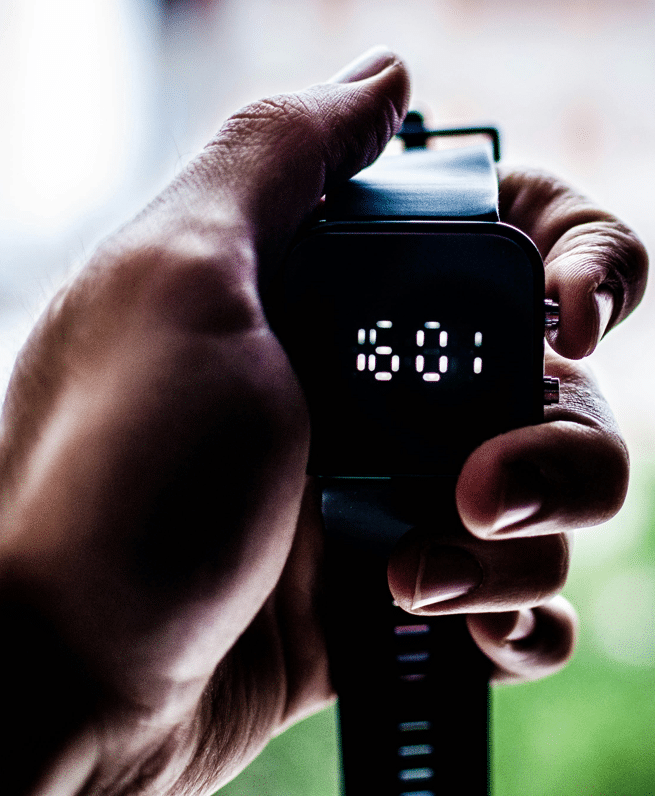
BEWARE: If you are an inexperienced or nervous presenter then you might talk much faster on the day or even completely forget some of the content you were going to deliver. This can result in finishing much quicker than planned so build in a back up in case this happens. If it is a small group that you are presenting to, a good back up plan is to have a question to ask the audience when you finish or you can have extra slides at the end that allow you to summarize or recap if needed. There are some tips coming later to help prevent you talking too fast or forgetting your content
Know Your Audience
Knowing your presentation is crucial but so is knowing your audience, presenting to a group of 8 year olds is completely different to presenting to a football team at an awards night. Be aware of this and plan your presentation accordingly. Some tips for dealing with different audiences:
- Children – Add interaction to keep them engaged and have fun
- Busy Professionals – Make sure your delivery is to the point, factual and on time
- Rowdy crowds – Present to individuals in the audience so they can’t hide and use interactive elements such as videos to get them focusing.
- Quiet crowds – Start with ice breakers to relax them
Most importantly think about the type of audience you will have and try to anticipate their reaction, if you know you are presenting last of 10 presenters and it has been a long day for the audience then you can expect them to be a little flat. This is normal and is why this part of the day is referred to as the graveyard shift for presenters, if you are on at this time then it means you will have to work a bit harder to add some energy but also means that you can expect the crowd to be a little quieter than usual and even a little restless as they are probably ready to go home. So there is no need to panic as it does not mean your presentation is poor. This sort of preparation can help you to stay calm in potentially difficult situations.
Know Your Equipment
This is the part that catches most people out and puts even experienced presenters under pressure. If you are using your own equipment (laptop, projector, cables, remotes etc) then test them out in advance and make sure they are all working, are charged up and are compatible . If you are using someone elses equipment then you need to be prepared for as many eventualities as possible and I would recommend bringing the following basic equipment if possible:
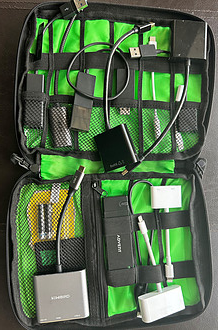
- Remote control for moving your presentation – always have your own with a laser pointer
- Adapters to convert your laptop to HDMI or VGA – Most venues will have either HDMI or VGA cables and many have now moved to wireless projectors
- Speakers if you need sound – Don’t assume that the venue will have sound
- Power lead – Make sure you have your power lead at all times
The above is a basic list but I wrote a full post on equipment needed for presentations
If you are unsure about the equipment then I would consider the following back up plans
- Save your presentation as a PDF – if saved in this format it doesn’t matter what it gets displayed on as it stays looking the same. Perfect if you get given a tablet to use rather than a laptop
- Email your presentation to yourself so if needed you can forward it to someone who has access to the equipment
- Save your presentation on a memory stick – this is a bit old school but could save the day for you. Make sure the memory stick is blank apart from your presentation. You don’t want to give someone else a memory stick with your personal info on
- Print a copy of your presentation – This is very old school but if doing a presentation at an interview and the equipment lets you down you can hand a copy to each interviewer to read as you talk through it.
Know Your Venue
This is another part that catches people out but most issues can be avoided with a little preparation. If you know the venue then check the room out in advance and see what equipment is there and test how it works. If you don’t know the venue (if attending an interview or presenting at a function) then I would suggest that you contact the venue in advance and ask for information on the equipment being used. Ask them if there is anything you need to bring and if there any common problems that people experience when they present there.
Whatever they say you should check out the following:
- Timing – Is there a clock in the room so you can monitor you you are doing – if not consider bringing a discreet desk clock you can see rather than checking your watch.
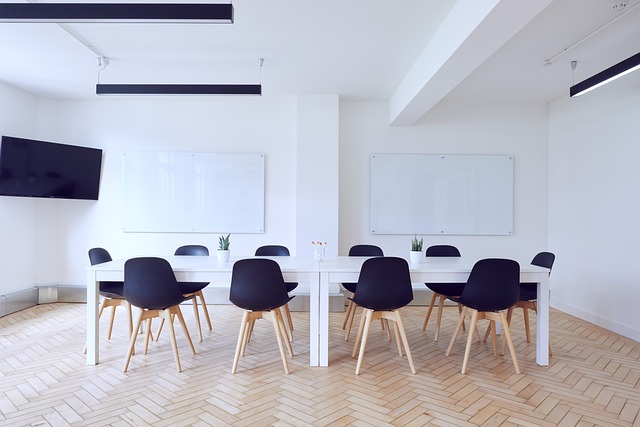
- The layout of the room – If your presentation involves interacting with the audience make sure you have room to walk around. If you want to get people up on stage with you, will they be able to get to the front?
- Equipment – Already covered above but check venue specific things like speakers if sound is needed. Cable connectors is basic but check anyway
- Wi-Fi – If you need to access the internet during your presentation make sure they have internet access for guests
- Security restrictions – Some venues won’t let you connect a memory stick anymore so you have to transfer presentations wirelessly.
Presentation Content Tips
Creating a presentation is a topic all of its own and you can read my post on Creating PowerPoint Presentations if you want more help with this. As this post is mainly about actually presenting I am just going to cover some basic tips for presentations that will make it easier to present better:
If you are inexperienced in creating presentations consider using a professional template system as it will be much easier and will be pre-formatted to help you create really professional presentations quickly – There are 100’s available but I like to use SlideModel and Expert Slides
If you are creating your own presentations try to use the following:
- Remember your slides are not THE PRESENTATION, they are to support you in presenting – Keep your slides to a minimum and use bullet points that you can expand on rather than pages of text. It is recommended to have 5 or less lines of text on a slide and no more than 5 words of text on each line, any more than this and your audience will just be reading ahead and ignoring you
- Use Storytelling to give your presentation a good flow with a definite start, a middle and an end – This makes it easier for the audience to follow and remember your presentation and also makes it easier for your to remember your content.
- Don’t put everything you know into the presentation – keep some info back in case you get asked questions so you can speak with authority and confidence
- Use color and contrast to focus peoples attention on the parts you want focused on – our brains automatically focus on color so you can make certain information stand out
- Use interactive images to increase engagement – be careful not to use too much and make sure it is relevant otherwise it will just be a distraction
- Have a good opening – Use a question, a controversial statement, a video or even a timer to get the audiences attention as if they are paying attention at the start everything that follows is much easier. Even better use an Ice Breaker for Presentations to get everyone engaged and ready to listen
Presentation Delivery Tips
Whether you are a first time presenter or have presented 100’s of times it can still be a nerve wracking experience for many people. The good news is that there are some tips to help you present a well as possible. When you are creating your presentation it is all about the content but when you are presenting it is the delivery that is the most important and the following tips will help you with your delivery.
Make sure you follow the advice on preparation above!!! – If you want to deliver confidently then you have to feel confident. The first part of this is making sure you have prepared properly, I have seen the most confident presenters go to pieces when not prepared so please make sure you know your presentation, your equipment and your venue before you do anything else
Approach the presentation with the right mindset – the reason that you are presenting is because you have something to share with the audience. Whether you are sharing your knowledge, the winners of a prize, your experience or even just 10 minutes of your time. You are sharing something with the audience and it helps to remember why you are there.
Accept and understand the nerves – most people panic when they are nervous because they think everyone will notice and no one else is nervous. The truth is that almost everyone gets nervous when presenting, even professionals. Accept this early and plan how you will work with it, slow breathing is good for this and helps to control your heart rate. By being aware that you are nervous will help you to understand that you might talk quicker and allows you to control what happens
Act Confident – Before you start, stand tall, look out into the audience and make eye contact with a few individuals, smile at them and act the part of a confident speaker. I find this helps me to feel confident even if I am not. It also signals to the audience that you are confident and they will relax with you.
Engage with the audience as soon as possible – ideally at the start as this will put you and them at ease straight away.
- For meetings – Use an ice breaker activity to get people interacting
- For larger audiences – Use a poll or a question, get people to raise their hands or stand up to place their answer
- For difficult individuals – ask them a question or hand something to them so they have to open up and engage with you
Use StoryTelling to deliver your presentation – it should have a start, a middle and an end and the presentation should work towards the end. Don’t rush to get there though as the best stories gradually draw the audience in so they want to hear more. If you don’t have a story make sure there is at least a theme to your presentation. You can then present it with a theme and this makes it much easier for your audience to follow you and your presentation.
Use you body and your voice as part of your presentation
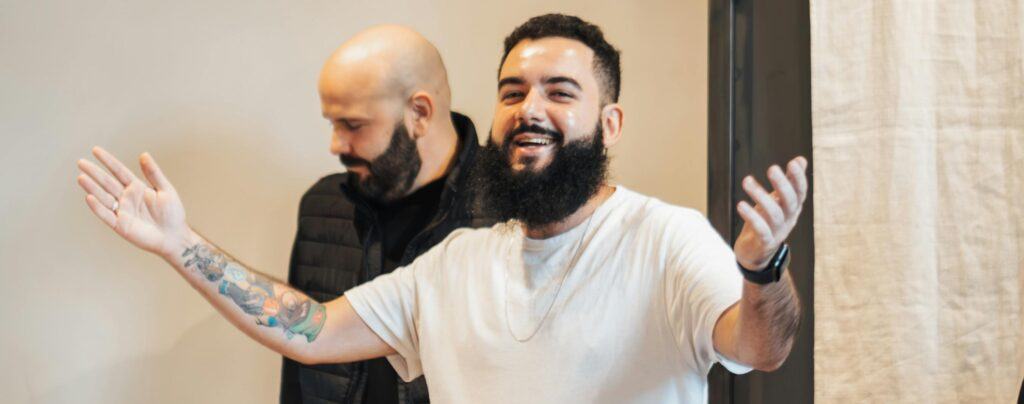
Body talk – Body language is really important for communication but you can also use your body for special effects
- Walk around – If someone is talking during your presentation walk towards them, 90% of people will stop talking and pay attention to you. If you are in a meeting, walking around a room forces people to turn with you and gets there attention
- Stand still – Standing still is a really confident pose and if you combine with a pause it will almost always get your entire audience to pay attention
- Lean Forward – If you lean toward people most people will naturally lean in towards you to listen to you
- Use your hands and arms – Most good speakers are very good at communicating with their hands, open them wide out and you look confident and welcoming, point at the screen with one hand and most people will instantly follow your hand and you will have their attention.
- Use your face – Smile and your audience will know you are enjoying yourself and they will enjoy it more too
Voice Skills – Your voice is not just to read the slides, it is one of your most important presentation tools and can be used in a variety of ways

- Changing speed – When you change the speed that you talk at it naturally makes what you are saying more interesting to listeners. Talking faster can indicate excitement especially when combined with raising your voice and smiling. Talking slower can stress importance on a topic and encourages people to lean forward and pay attention.
- Changing volume – like speed changing volume adds flavor to your delivery, talking loud can surprise people and grab them attention while talking quietly is a great way to get people to listen more carefully
- Communicate your emotion – If you are excited let it come through when talking, if you want to be serious then talk in a serious tone, if you have a fun topic then talk as if you are enjoying it. This is one of the best ways to make your delivery more interesting for listeners
- Silence – A pause during your presentation is a great way to emphasize an important point and also make sure your audience are paying attention to you.
If you learn these skills and tips it will help you to notice them in other speakers and awareness is the first step towards using them yourself, I would then encourage you to practice them all and find the ones that you like using. Everyone has their own style and it is important for you to be you when presenting. The more you practice these and other skills the better you will become and the more confident you will feel.
Post-Presentation Tips
Hopefully your presentation went really well and you can relax a little now and feel proud of what you accomplished, if you intend on doing more presentations then it doesn’t end here though. I would recommend getting feedback so you can improve the next time.
Feedback methods – The easy way to get feedback is using a poll or a short survey. Ideally do it before you wrap up but you can always send it on after your presentation, if you do this do’t expect everyone to reply though as human nature means at least half won’t.
Separate Content & Delivery – Make sure you allow people to give feedback on the content of your presentation and your delivery separately. Otherwise they get blurred, your delivery might have been really good but if they didn’t like the content they might score you low or vice versa. You want to find out what was good and what needs to be improved so keep any feedback request short but specific.
Don’t ask closed questions – If you ask if they liked your presentation they can only answer yes or no. Use scoring charts (maybe 1 to 5) and l eave spaces for open feedback
Ask what was missing – A great way to improve is to ask your audience what was missing or what they would have liked you to include. You might get some great feedback and can use this next time.
Review videos – If it was recorded then reviewing your own performance is the best way to improve but remember it will be painful to watch yourself the first couple of times and that is normal.
Think about your own performance – Take some time to think about your performance and what went well or you could have done better. I like to do this in the car when driving home as it is peaceful and there are no interruptions.
I hope this guide helps you to prepare and deliver your presentation as confidently as possible but remember, enjoy yourself and whatever happens use it to improve for the next time. If you have any tips of your own or any feedback please leave a comment below
Pete


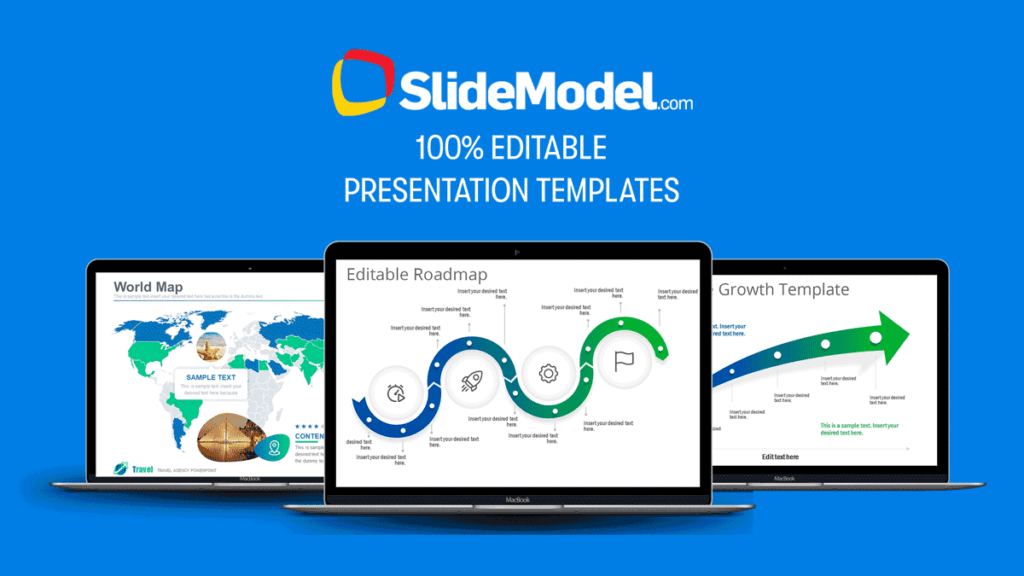
The tips provided on doing a presentation are really comprehensive and actionable. It’s clear that a lot of thought went into creating a guide that can be beneficial for both novice and experienced presenters. The emphasis on preparation, knowing your audience, and using your body and voice effectively are particularly standout points. This guide is a great resource for anyone looking to improve their presentation skills.
Hi Tony,
Thanks for the feedback and I am glad the tips were useful, I started writing this after I was giving some advice to a younger colleague and he mentioned that it would have been great to have some info like this when he was starting out. So many people think it is all about the presenter and they just don’t realize there is so much else that you can work on to improve your presentations.
Thanks again
Pete